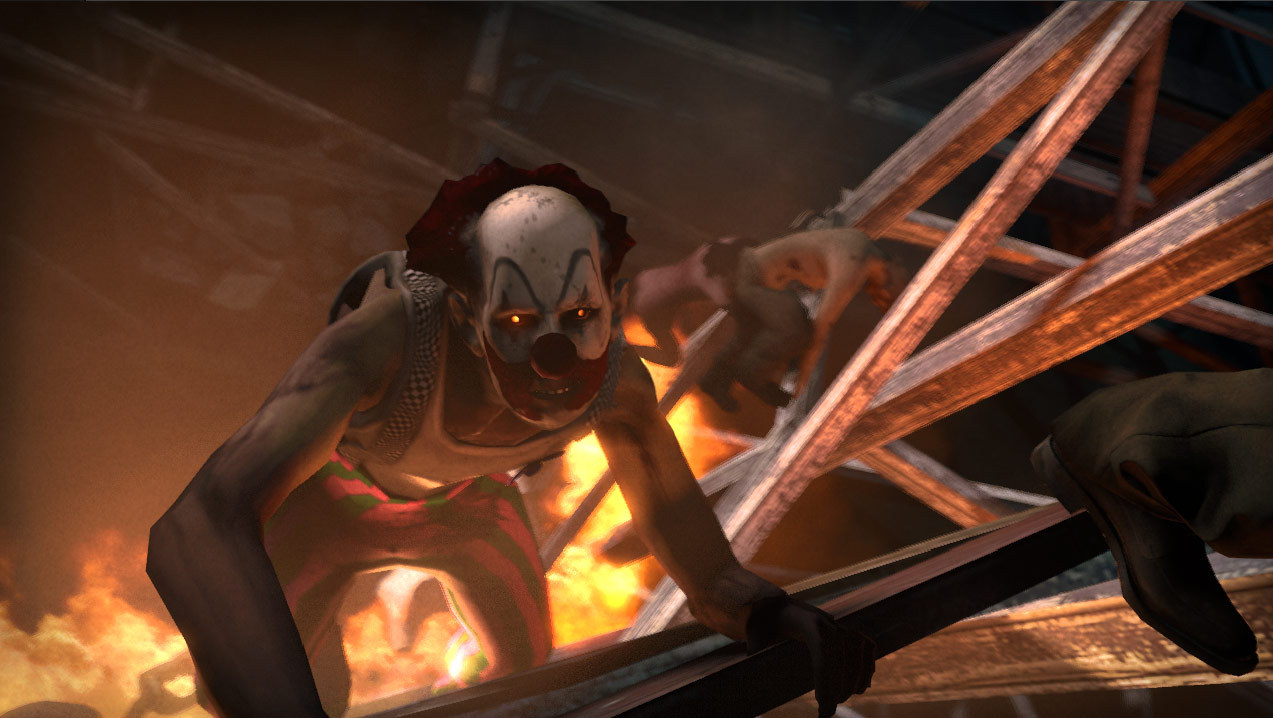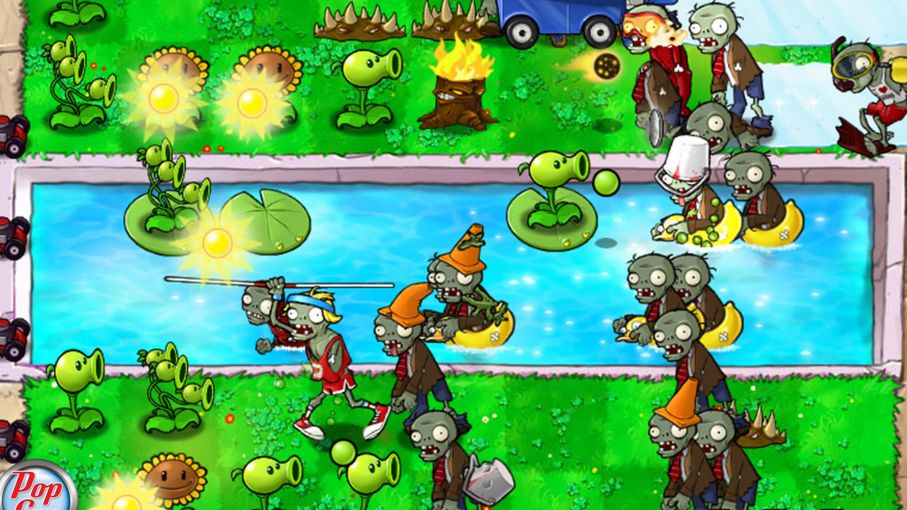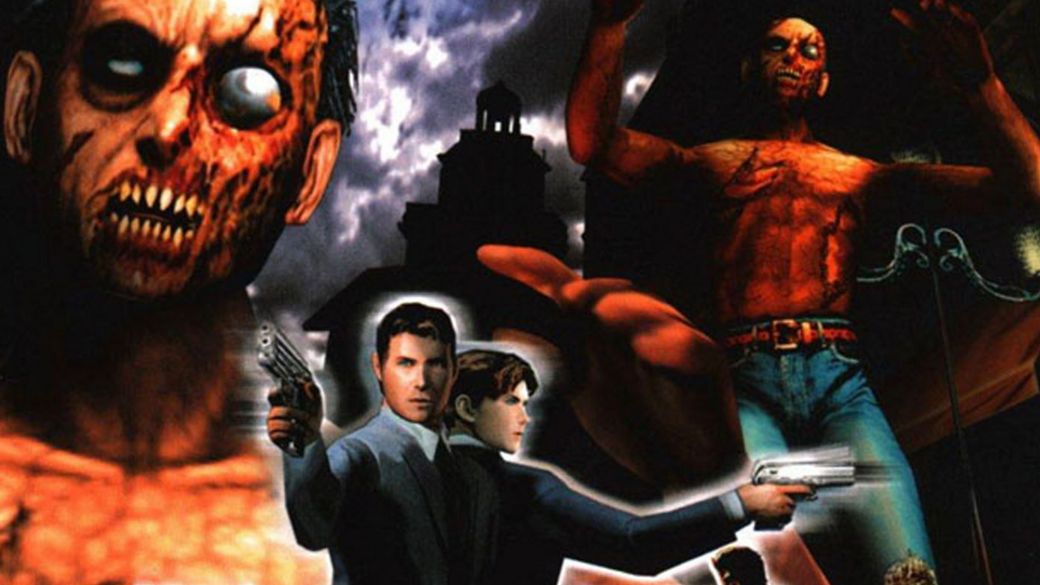
Zombies!
Sometimes they're slow, sometimes they're fast, sometimes they're the magically risen dead, other times they're infected, but they almost always come in a horde: hell yeah, they're zombies, one of the best video game enemies ever. Their folk and filmic origins have nothing to do with video games, but zombies were always fated to be our fodder. They're dumb and numerous, which makes them a perfect shooting gallery, and they can be manipulated into whatever grotesque form makes for the best game (or the best metaphor for whatever corner of the human experience you want to explore). Here then, in no particular order, are our favorite games which star the wonderful dead alive.

Left 4 Dead 2
There are purists who will say that the first Left 4 Dead is the quintessential zombie game and that its sequel is a cash-grabbing wannabe. But when said sequel has assimilated all the levels of the first—upping the scale and upping the spectacle while preserving that incredibly pure four-players-against-the-world conceit—it’s hard to see it as anything other than superior.
Left 4 Dead imagines zombies (or "infected", to be precise) as a crashing wave rather than a lingering, overwhelming presence. A quiet courtyard can become a screaming death zone in seconds. In the sequel especially, the gore system can reduce charging creatures to a hobbled mess, and trailing guts effects recall the overwrought gore SFX of old video nasties. The result is a satisfying, bloody co-operative massacre that grows in intensity as the round progresses. Left 4 Dead generates great survivor stories, and features one of the best realisations of a zombie horde in PC gaming.

Resident Evil
In 1996, Resident Evil coined the phrase “survival horror”. It was more than a snappy marketing line—Resident Evil was a counterpoint to previous horror games and to the other standouts of ‘96: Tomb Raider, Quake and Duke Nukem 3D made you unstoppable, whereas Resident Evil made you vulnerable.
Sure, you're Raccoon City special forces, but that still makes you human, reliant on scarce ammunition and the element of surprise to make it from one room to the next. And Resident Evil loves to take the latter away from you. Tank controls were outdated even for the day, but they were kept in to force ponderous, agonising reactions to quick and bitey foes. Unlike Left 4 Dead, just one of these zombies can cause serious damage.
Resident Evil was polished up earlier this year in the remastered release which Andy called "a brilliant, brutal survival horror dripping in atmosphere" in our review.

Resident Evil 4
A contentious entry, because the lumbering antagonists of Resident Evil 4 aren’t technically zombies. The Ganados are compelled to behave like the undead, though, stumbling slowly toward Leon with pitchforks and muttered curses. They embody the zombie shambler archetype, but Resi 4 peps it up with a nasty twist—an ordinary enemy can split their melon and start flailing at you with a writhing mass of claws in scenes you might expect from a medieval remake of The Thing.
It’s easy to make fun of the Resident Evil games for the corny dialogue and wayward vocal work, but they’re clever with their source material. Resi 1 was an excellent haunted house. Resi 4 is a pastiche of deepest darkest Europe. It’s a grim cross between the Germanic woodlands and Transylvania, a mythological parallel dimension full of dark villages and castles where cultists and crocodiles live side by side. There they wait for an earnest outsider to come a-wandering. Leon, fuelled by naive determination and a curtain haircut, fends them off in claustrophobic, desperate combat.
Shinji Mikami builds on the formula with not-zombies called The Haunted in The Evil Within, which is a must-play if you loved Resi 4.

Plants vs. Zombies
Back in 2009 PopCap was on a roll. Thanks to Bejeweled and Peggle it became known for creating colourful and compulsive short-session games. Plants vs. Zombies continued that trend, pitting waves of zombies against their most feared foes: potted plants powered by blobs of congealed sunshine.
It’s a resource management game with an alluring difficulty curve, and it absolutely glows with personality. The sunflowers smile and sway with the music, the wall-nuts remain stoic as their slowly gnawed to crumbs by the undead. The zombies are great too, riding dolphins, lawnmowers and catapults in an effort to break past your garden to the clueless humans indoors.

The Walking Dead
The undead threat can feel a little blasé now, but we forget when staring down the horde of B-grade zombie shooters that the apocalypse’s best stories aren’t about animate corpses at all, but the human dramas that unfold around them. The Walking Dead was about people, which is why Telltale’s formula is as successful as a zombie game as it (almost) is with fairytale werewolves.
The Walking Dead is one of the very few games to look at the most horrifying aspect of the zombie menace—the moment a person turns from human to a mindless eater. Would you hide a zombie bite? What would you do if you discovered a friend was hiding a zombie bite? When the time came and you felt yourself losing your mind, would you want someone to be there to end it all? Tough questions that The Walking Dead grapples with throughout its five harrowing episodes.

Project Zomboid
Developer The Indie Stone moved away from scripted action early. These days we’re all about interlocking systems, but when Project Zomboid came around depression, starvation and disease were revelations. Miserable, heartbreaking revelations.
Project Zomboid focuses on the mundane day-to-day task of staying alive, which isn't mundane at all if the world is infested with man-eating creatures. You have to secure food, keep yourself warm, manage your emotional state and try to eke out a temporary living in a world that wants you very cold and dead.
Zomboid has been around for a while, but development continues apace, and every new update adds extra depth to the simulation.

House of the Dead
Pure schlock, but so entertaining for it. House of the Dead started life as an on-the-rails lightgun arcade game and came to PC in a hard-to-find CD-ROM edition. It’s a surreal and creaky game by today’s standards but the zombies fragile limbs and heads are surprisingly fun to dismantle, and it’s worth the trip for the astonishingly wonky voice acting. If you’d rather not track it down, there’s plenty of amusement to be head watching the story cutscenes on Youtube, which show that the series really seemed to hit peak nonsense at the end of House of the Dead 2. “GOLDMAN!”

Typing of the Dead
House of the Dead is not a game that took itself seriously—it’s quite hard to take yourself seriously when wielding a light gun. Typing of the Dead tops that, elevating the art of the B-movie zombie gorefest to a level still more absurd. It’ll be the typists that survive the zombie apocalypse, mark my words, hammering out devastating phrases like ‘Sexual Tyrannosaur’ and ‘Ample buxom’ to mow down the undead.

Dead Rising 2
Dead Rising 2 is about weapons—or rather, the determination to see weapons where other men perceive mundane household objects. Despite the odd foray into social commentary, Dead Rising rarely pretends to be more than splattery catharsis. Infected hordes are all but vaporised by combo weapons that range from the classic baseball bat ‘n’ nails to medium-range death-dealers like the chains-oar. Slaughter is a proud tradition among zombie games, and Dead Rising 2 makes an art of it. The sequel was a rather brown and uninspiring follow-up and sadly the original, with its unusual campaign time limit, never made it to PC.

Dying Light
Dying Light takes a more sombre approach to the Dead Rising idea. You have an open world full of zombies and loot. Crafting facilities have you combining found garbage into new bludgeoning/chopping/puncturing devices, which can then be deployed in gruesome first-person combat against the hordes. There’s first-person parkour, too, and the city is perfectly built to let you chain hops, jumps and mantling manoeuvres cleanly.
Curiously, the zombies themselves have dual personality. By day they wander around with the urgency of the undead in an old Romero flick; by night they become frenzied, screaming chargers that can maul you to death faster than you can say “please stop that”.
PC Gamer is the global authority on PC games—starting in 1993 with the magazine, and then in 2010 with this website you're currently reading. We have writers across the US, Canada, UK and Australia, who you can read about here.


